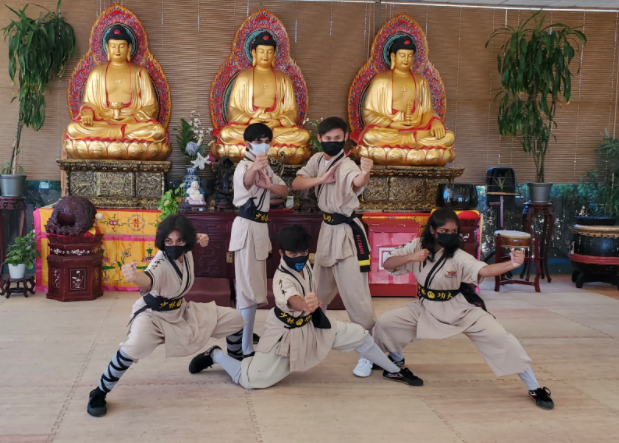Image provided by author.
Everyone knows about martial arts, whether from movies like “The Karate Kid” or the famous song “Kung Fu Fighting” by Carl Douglas. But what exactly is martial arts and how is it associated with the arts? For starters, martial arts has a variety of purposes. In addition to being a sport, it can be used for self-defense, relaxation and self-expression. Art is something that is used to help individuals express and portray their emotions or themselves in general, allowing martial arts to be considered an art form. There are also many different types of martial arts, including karate, jiu-jitsu, and judo to name a few popular ones. Every type has a unique story and way of signification, and one great example of this is kung fu.
Kung fu originated in China in the 5th century B.C. Bodhidharma is an important figure in the world of kung fu, for he is the one who created many of the movements and forms practiced today. A student here at Washington, who has been doing kung fu for 5 years, defined kung fu as “self-defense and wellness. Wellness is an art and your body is the canvas. [Kung fu] is basically performances of fist and weapon forms.” They also described it as “dangerous dancing,” which is pretty reasonable if you look at kung fu fight scenes in movies starring famous martial artist Bruce Lee. Kung fu is practiced in many places worldwide today, like at the Shaolin Temple training centers.
Another well known form of martial arts is taekwondo, which originated in Korea over 2,000 years ago. It spread to the United States in the 1950’s and is now one of the most popular types of martial arts. Taekwondo made its Olympic debut in 2000 in the Sydney Olympics and is now a full medal sport. Nitika Sathiya, a sophomore here at Washington, has been doing a mix of taekwondo and karate for around 10 years now. She says her form of martial arts consists of “basic techniques that can be turned into more advanced moves, such as staces, punches, and kicks.” She continued to say that she learned “many self defenses, forms, and throughout the curriculum there is an emphasis on using kicks (relating to taekwondo) and fists (relating to karate). Sathiya also shares her thoughts on how taekwondo and karate are art forms. “What makes art so special and beautiful is that it is subjective; there is no wrong or right,” she says. “It is filled with emotion, different techniques, and usually takes a lot of practice. For example, dance at its basic form is just moving your body, but you can learn how to do it rhythmically, intricately, or add more complex moves.” She sees martial arts the same way.
Performances are a huge part of practiced martial arts today, whether it’s for a competition or just to show your friends a new skill you learned. Performances are also used for self-expression by using one’s energy and spirit incorporated in their fighting set to create a realistic looking fight scene. The way you present yourself in your form or set of techniques sets the mood for the audience or your fighting partner. The more one is into their form, the more other people engage or react.
The art of martial arts is not simply a set way to fight, but rather a personal statement added on to fighting techniques. Martial arts is a fun and interactive art form that can also be used as defense whenever needed or just as an outlet for stress. So the next time you watch Kobra Kai keep in mind that the art shown isn’t just acting but also the unique and astonishing art of martial arts.
Aleesha Sachanandani is a senior at Washington High School. He was born in Hayward but has lived in Fremont for all of his life. This is his second year with the Hatchet and is currently the Arts and Entertainment editor. He loves building Legos, talking about vehicles, doing kung fu, and playing sports. He plans to do whatever his mind and heart agree on together for his future and is excited to explore. He also plans to work towards bettering the world to support various communities. GO HUSKIES RAHHHH


